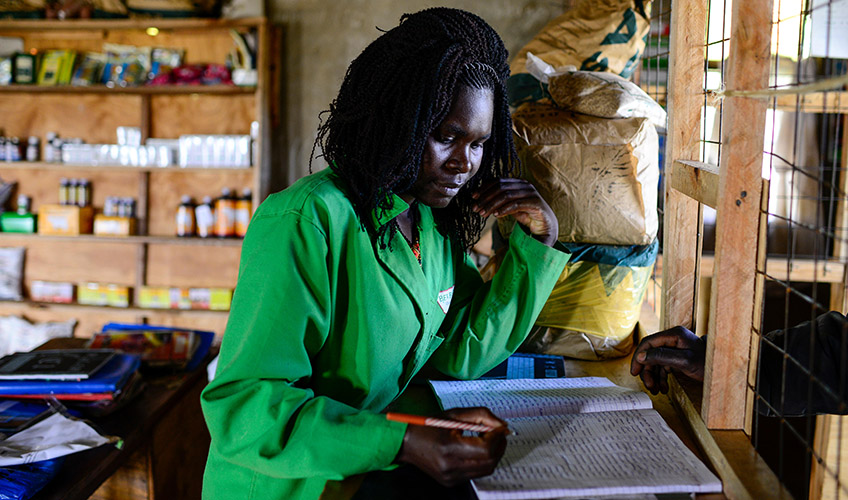Rethinking the link between jobs and peace
If not grounded in local realities, employment programmes can actually exacerbate tensions and conflict. So, how can organisations working on job creation in fragile settings maximise their positive impacts?

The link between jobs and peace often appears obvious in fragile and post-conflict settings, where the unemployed, particularly young people, are seen to have grievances over unequal access to jobs, as well as financial motivation to join violent groups.
Development practitioners and donors have invested considerable resources in employment creation programmes to bring about peace – despite evidence from the ground challenging the idea.
Untested assumptions
International Alert’s study of how peace objectives are integrated into employment programmes in Kenya and Somalia found that while development, humanitarian and stabilisation programmes frequently make the assertion that reducing unemployment reduces conflict, this assertion is often untested or merely grounded in global studies that have little relevance to local contexts.
This makes it extremely difficult for donors or practitioners to understand or explain the link between their programmes and peace. Evaluating success is often focused on measuring the outputs, such as skills received or a short-term increase in employment levels. Rarely does a measure of success focus on peace indicators (such as reductions in violence or an increase in trust) among the programme beneficiaries, and beyond.
Broadly speaking, these projects and programmes draw on drivers of violence triggered or fuelled by unemployment, that the milestone report ‘Jobs aid peace‘ (International Security and Development Center) identifies: “lack of contact”, “existence of grievance” and “lack of opportunity”.
“Lack of opportunity” dominates thinking, particularly in relation to youth-focused programming and programming focused on the prevention of violent extremism (PVE) – i.e. if young people are employed, the incentive to join violent groups offering a potential income will be weaker.
However, the report found that in the context of the Horn of Africa, these assumptions are often unfounded.
A complex picture
The drivers that trigger, perpetuate or escalate violent conflict are often a complex picture of economic marginalisation rooted in systems and structures of political and social exclusion, and cannot be reduced to merely a lack of jobs.
While not all the programmes studied explicitly set out to build peace or stability through employment interventions, they were taking place in fragile or conflict-prone settings. Implementing a job creation programme in such settings cannot ignore peace and conflict dynamics. It requires a conflict-sensitive approach that entails maximising an intervention’s positive impact on peace; working on the drivers and causes of violence, beyond ‘doing no harm’.
Programming needs to be grounded in a robust (and regularly updated) conflict and context analysis. For instance, one of the employment-promotion programmes we reviewed developed a feasibility study in Somalia to inform design, including understanding customary taxation and clan dynamics to be taken into consideration in the final design of the project.
However, for the most part, the programmes we looked at did not include robust and contextually relevant systems to understand the type of impacts, both positive and negative, that its intervention was having on the context where it was operating.
Yet, this is critical in order to avoid exacerbating violence. For example, group competition over jobs (e.g. between clans or sub-clans) can be a conflict driver, particularly in a context like Somalia where jobs can be perceived as a communal resource.
Furthermore, such programmes can set up expectations that can go unmet. For example, research by Mercy Corps on their Somali Youth Leaders Initiative found that skills training risked raising expectations that the jobs market cannot meet. These unmet expectations can serve as their own drivers of conflict.
Analysis is key
Using stability or peacebuilding as merely part of the rationale for a job creation programme in a fragile setting leads to an unclear impact on how these programmes reduce conflict, or worse, ends up doing harm.
The report suggests several steps for future programming, including a fundamental recommendation to conduct a conflict analysis that should inform the design of the project, be regularly updated and used and owned by implementing teams.
Organisations should ensure that both demand-side (job market/employers) and supply-side (employees/labour force) interventions are coordinated and harmonised.
One way forward is to shift programming from initiatives that promote job creation alone, towards those that consider how jobs are distributed and targeted, and the resulting impact on poverty and conflict reduction.
This requires analysis that combines political economy analysis, labour market analysis as well as conflict analysis and enables the project to unpack its initial hypothesis on the causal link between jobs and conflict.






